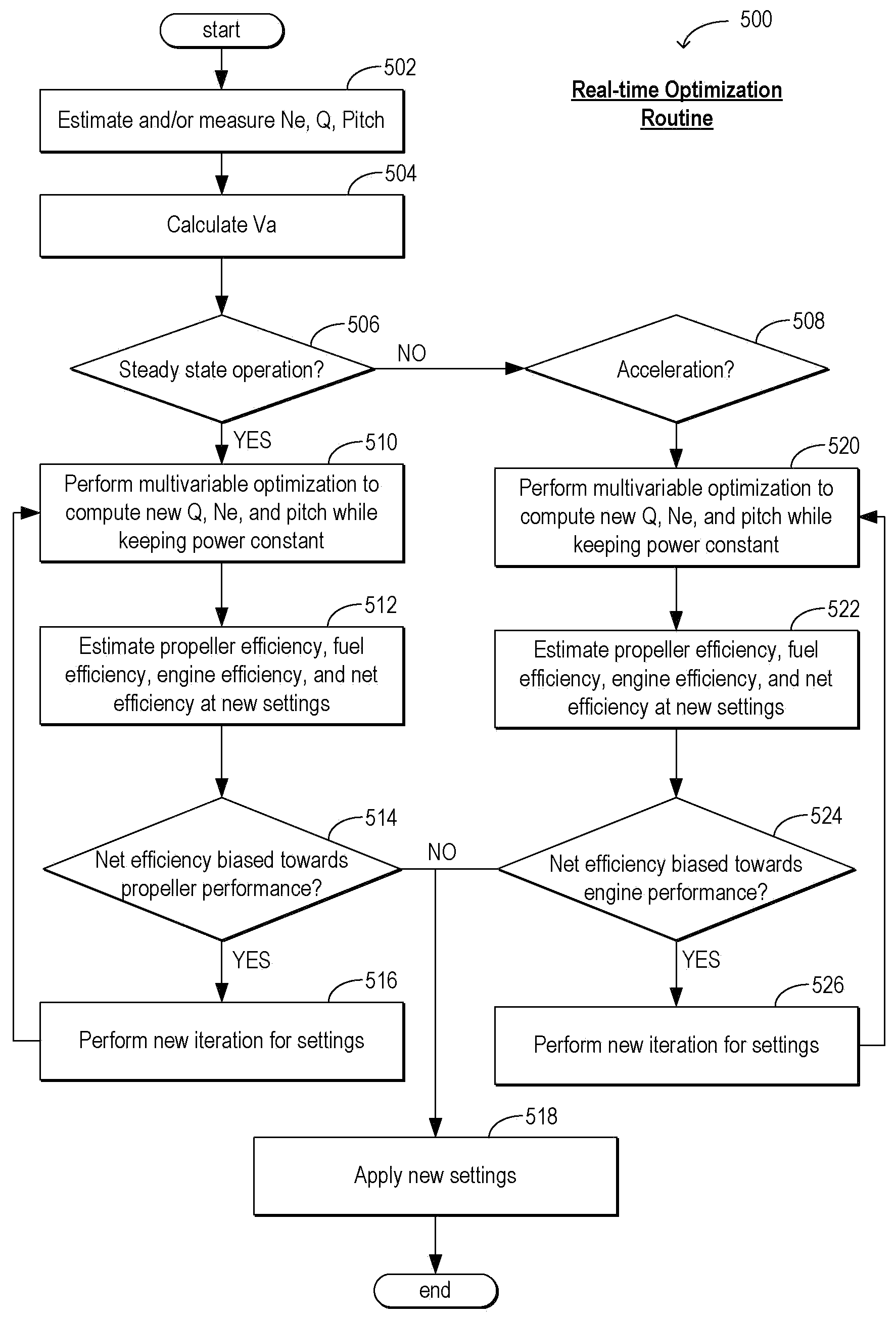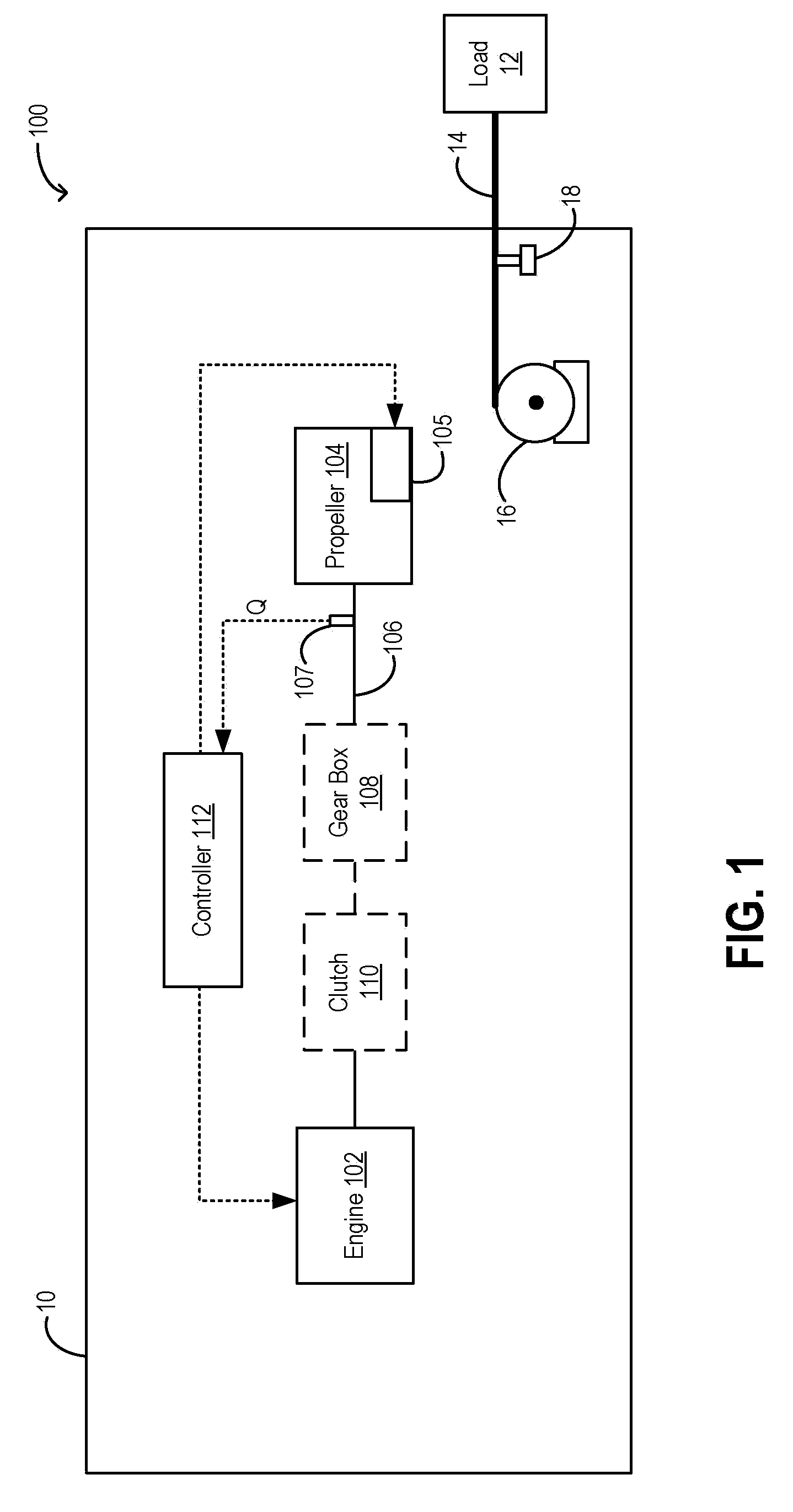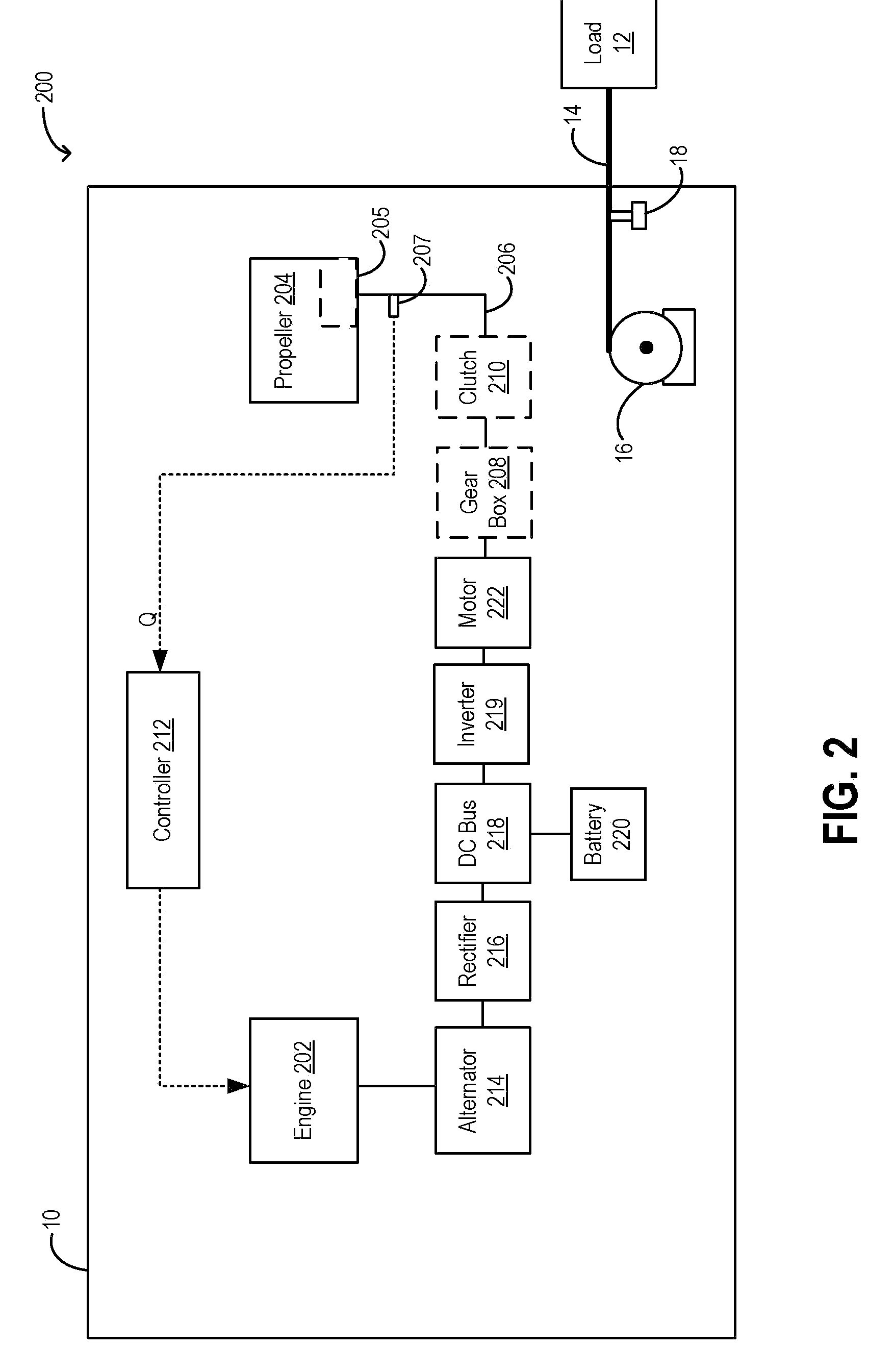[0006]In one example, a propulsion
system is configured with a controllable pitch propeller. In response to an operator power request, vessel operating data are estimated in real-time. The estimated data includes an estimate of the prevalent propeller torque (for example, using a torsion meter, or sensor, mounted on the propeller shaft, or inferred from the motor current of a propeller's pitch controller), propeller pitch, engine speed, and other vessel operating conditions (such as speed of advance in water). The estimated data is then used to update a propeller performance map (or performance curve), and an engine performance map (or performance curve). A multi-variable optimization routine based on the updated maps then enables propeller pitch and engine speed adjustments to be determined that can improve propeller efficiency and / or
engine efficiency, or
overall efficiency. As such, more than one adjustment to engine speed and / or propeller pitch may improve engine and / or propeller efficiency, or
overall efficiency. A controller can select a propeller pitch and engine speed adjustment combination, from the range of adjustment possibilities, based on performance characteristics desired. In this way, propeller pitch and engine speed settings can be varied independently from one another. In one example, propeller pitch and engine speed are not set in a 1:1, fixed relationship. Consequently, adjustments to propeller pitch settings may not necessitate substantially equal and / or compensatory adjustments to engine speed settings, and vice versa. In one example, during acceleration, settings may be selected that enable enhanced engine performance, including an expedited
response time and / or greater fuel savings. In another example, during a
steady state mode of operation, settings may be selected that enable enhanced propeller performance.
[0007]In another example, a propulsion
system is configured with a fixed pitch propeller. Herein, a
DC bus positioned intermediate the engine and the propeller enables engine performance to be decoupled from propeller performance, and allows the engine and propeller settings to be independently adjusted and optimized based on real-time vessel operating data. During
steady state operation, in response to a power request, engine settings can be adjusted based on updated
engine efficiency and fuel maps. Specifically, the
multivariable optimization routine can select engine speed and torque settings that enable the requested power to be supplied most efficiently. During acceleration, engine settings can be adjusted to provide greater fuel savings.
Propeller settings, such as propeller speed, may then be adjusted based on engine settings.
[0009]In this way, engine and propeller settings may be adaptively and independently reconfigured, based on the speed and / or power requested, and further based on real-time vessel operating data, to thereby enable both engine and propeller performances to be independently optimized. By further biasing the adjustments to engine and / or propeller settings responsive to a vessel mode of operation and / or selected vessel performance characteristics, engine and propeller performances may be improved.
[0011]The
hybrid drive system may enable engine and propeller performances to be decoupled, for example, by decoupling engine and propeller loads, so that the engine and propeller performances may be independently adjusted and optimized. For example, the engine torque may be adjusted by receiving power from a battery during loaded operations, and then charging the battery during lighter loads. Also, the
hybrid drive system may be adjusted to meet transient load changes with stored electrical energy and / or to reconfigure power distribution between auxiliary and propulsion circuits responsive to changes in
power demand as well as engine and / or propeller operating conditions (such as during engine and / or propeller degradation). In doing so, a flexible and reconfigurable system may be provided that increases system reliability.
 Login to View More
Login to View More  Login to View More
Login to View More 


